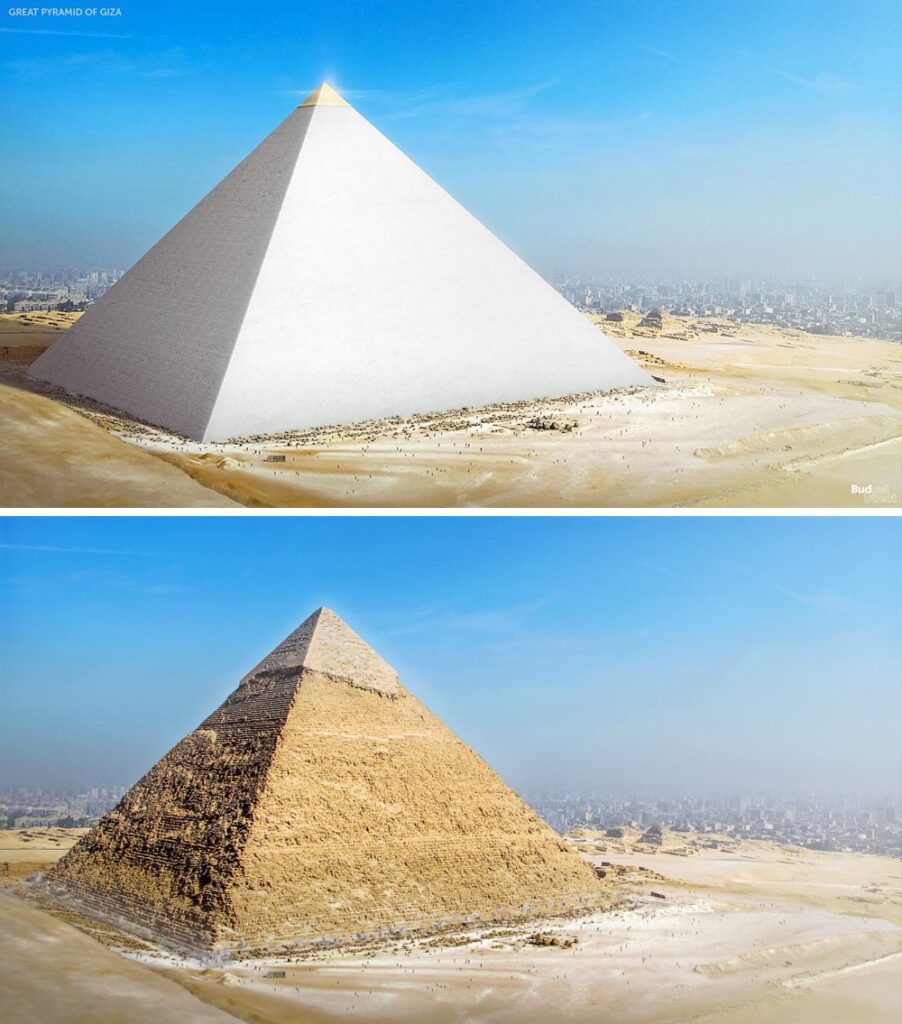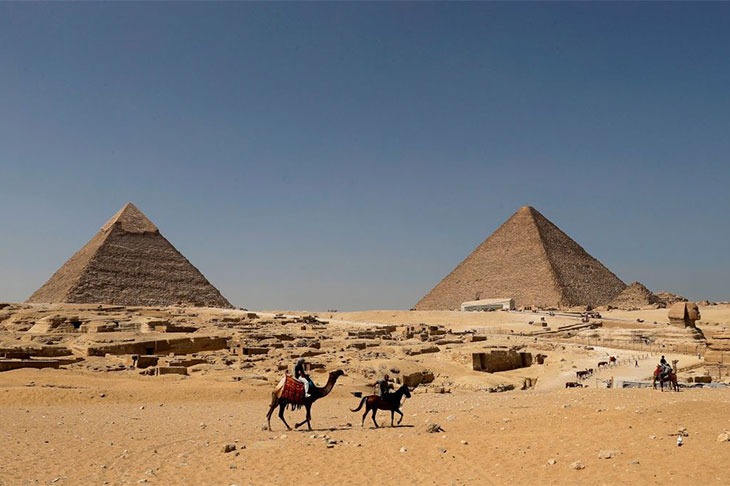
Towering over the sands of Egypt, the Great Pyramids of Giza have captivated the imagination of humankind for millennia. These awe-inspiring structures, built as tombs for three pharaohs of the Fourth Dynasty, Khufu, Khafre, and Menkaure, are a testament to the architectural genius and engineering prowess of ancient Egypt.

While the pyramids’ current appearance is undeniably impressive, their original grandeur far surpassed anything we can witness today. When first constructed, the pyramids were adorned with a smooth, white casing of fine Tura limestone, reflecting the scorching desert sun with a dazzling brilliance. This gleaming exterior, coupled with a gilded pyramidion, or capstone, at the apex, must have been a truly breathtaking sight.

ver time, the pyramids have undergone significant weathering and erosion. The smooth limestone casing has been largely stripped away, exposing the underlying core of rougher limestone blocks. The pyramidia have also been lost, either through natural causes or human intervention. As a result, the pyramids have taken on a more weathered and rugged appearance, yet they remain nonetheless majestic and awe-inspiring.

Despite the loss of their original splendor, the Great Pyramids of Giza continue to stand as enduring symbols of human achievement. Their construction required an immense amount of manpower, resources, and organizational skills, feats that still amaze us today. The pyramids offer a glimpse into the advanced civilization of ancient Egypt and its enduring legacy.

While the pyramids may not retain their original luster, their significance and beauty remain undiminished. They stand as a testament to the power of human creativity and the enduring appeal of monumental architecture.

Leave a Reply